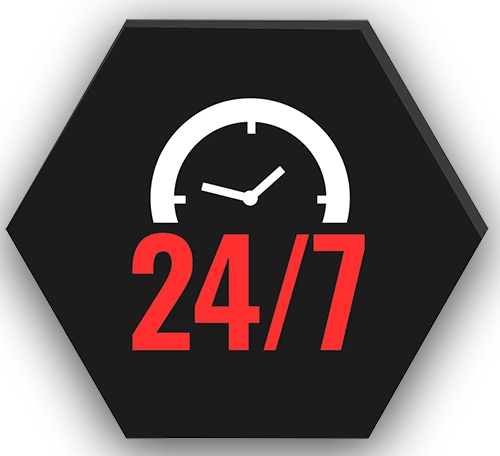Staying cool in West Valley City during peak summer can be tough, especially when different parts of the home feel hotter than others. If some rooms never seem to get as cool as others, even with the AC running all day, that’s a clear sign your home may benefit from temperature zoning. A ductless AC system makes this possible, allowing you to manage each area separately, so no space is overcooled or undercooled. This method isn’t just about comfort — it’s also a smart way to cut down on wasted energy.
Temperature zoning setups give homeowners better control over indoor cooling without sending utility bills through the roof. Instead of relying on a single thermostat for the entire house, each zone can have its own control, or be part of a smart system that adjusts based on actual use. For homes with multiple floors or rooms that get used at different times of the day, zoning brings a noticeable difference in how comfortable things feel during the hotter months.
Understanding Temperature Zoning
Temperature zoning refers to dividing your home into separate areas, or zones, that can each be cooled independently using your ductless AC system. Each zone has an indoor air handler connected to an outdoor unit, giving you the ability to adjust temperatures room by room. This system can be managed manually through remotes or integrated into a smart control panel for scheduling and automation. Whether you use a few rooms regularly or the entire house, zoning helps match cooling to your actual routine.
When cooling is restricted to active areas of the home, the system doesn’t need to work as hard to reach set points. That can mean smoother performance and better long-term durability. Beyond energy management, zoning also helps fix frustrating comfort issues. For example, in a two-story home where upstairs bedrooms get too hot at night, proper zoning allows those rooms to be cooled without freezing out the downstairs living room.
Here are a few ways temperature zoning makes sense for homes in West Valley City:
– It lets you cool only the spaces you’re using, like bedrooms at night and living areas during the day
– It helps prevent constant thermostat battles among family members
– It corrects uneven cooling problems, especially in homes with additions, basements, or large open areas
– It reduces overworking the AC system, lowering wear and tear over time
Especially during the warmest months, every degree of comfort counts. Temperature zoning gives you flexibility and precision that standard central units can’t match.
Planning Your Zoning Strategy
Before setting up a zoning system, it’s important to know which parts of your home need their own zone. Not every room has to be separated, but a proper layout can save energy and improve comfort faster. Start by looking at how your household uses the space — you’ll begin to spot natural matches for zones.
Common zoning groupings include:
– Bedrooms grouped together as a night zone
– Kitchen and dining areas grouped as a daytime zone
– Home offices or guest rooms set up as part-time use zones
Homes with more than one floor typically benefit from separate zones for each floor. Heat rises, so the upstairs level often needs its own cooling adjustment. Finished basements and sunrooms also make good individual zones if used during specific times.
When planning where to place each indoor unit, aim to:
– Put units where airflow isn’t blocked by furniture
– Avoid placing units too close to doors, especially if doors are left open often
– Consider sun exposure — rooms facing west may get hotter in the afternoon and need a unit that can respond as temperatures rise
Don’t forget to talk with our professionals when planning the zoning layout. Each home has unique needs based on layout, insulation, and usage patterns. A well-thought-out zoning strategy leads to fewer adjustments, better energy performance, and a consistently comfortable home during West Valley City’s summer heat.
Setting Up and Optimizing Zones
Once your layout is mapped out and zones are planned, the next step is getting your system set up for daily use. This means more than just installing the equipment — it’s about fine-tuning each zone so that the system responds to how you actually live in the space. With ductless AC systems, proper setup plays a huge role in how efficiently each zone runs.
During setup, each indoor unit should be tested to make sure airflow reaches the intended area. If one unit blows too directly onto a seating area or doesn’t distribute air evenly across the room, adjustments can be made immediately. Positioning and airflow direction are key. For example, in a bedroom, it’s better to aim the airflow across the room rather than directly at the bed for constant comfort without a chill effect.
Smart settings and automation help match the system to daily routines. A good starting point is to assign daytime temperatures to common areas like the kitchen and living room, while letting sleeping areas run cooler at night. Many controllers allow weekly schedules, so once it’s customized, you won’t need to adjust it often.
Avoid common mistakes like:
– Setting identical temperatures across all zones regardless of activity
– Placing indoor units too close to heat sources like ovens or direct sunlight
– Forgetting to adjust zone settings when home occupancy patterns change
– Sealing off rooms with closed doors that trap cooled air and reduce airflow
– Ignoring manufacturer recommendations for unit placement height or clearance
Each home will have its quirks, but making thoughtful adjustments to the schedule and settings can lead to better performance and fewer system hiccups. Whether it’s cooling down an upstairs room before bedtime or limiting energy use in guest rooms during the workweek, small changes can lead to big improvements when applied consistently.
Maintenance Tips for Zoned Ductless AC Systems
After setup, some homeowners expect the system to keep working trouble-free indefinitely. But even a zoned ductless AC system needs regular attention to stay efficient and prevent problems. Well-maintained systems cool more effectively, use less energy, and tend to last longer.
Start with the basics. Air filters in each indoor unit need to be checked and cleaned every few weeks, especially during hotter months when the system runs more often. Clogged filters slow airflow and make the unit work harder, which shortens its life and reduces performance. If you have pets or live in a dustier part of West Valley City, cleaning might need to happen more often.
Routine inspections should include:
– Wiping down vents and indoor units to prevent dust buildup
– Checking for signs of moisture or leaks near indoor units
– Listening for new sounds that could indicate airflow restrictions
– Making sure remotes or control apps are working correctly
– Examining outside units for debris, overgrown plants, or blocked airflow
One homeowner in West Valley City kept getting uneven cooling in their family room, assuming the unit needed repair. After our technicians inspected the system, it turned out the room’s filter hadn’t been cleaned all summer. Once cleaned, airflow improved and the temperature evened out in less than an hour. Simple maintenance steps can fix things before they turn into expensive repairs or ongoing comfort issues.
If any one zone seems to underperform, it’s often a signal that cleaning or inspection is overdue. Uneven temperatures, rising energy bills, or a unit that turns off unexpectedly can all be early warnings of a maintenance need. It’s always better to catch these signs early than deal with a breakdown during peak summer heat.
Enjoying a Perfectly Zoned Home
The right zoning setup can turn a once frustrating home into a space that feels balanced and easy to manage. Less arguing over thermostat settings, fewer hot or cold zones, and more control over how energy is used — all of these are built into a well-zoned ductless AC system. Once zones are running smoothly, you’ll notice faster cooling where it’s needed, and a system that works in sync with your lifestyle.
Residents in West Valley City often deal with temperature differences from room to room, especially during a long stretch of heat. A smart layout supported by solid planning and routine upkeep helps manage these challenges without overloading the system. When every zone is tuned to your needs, the entire home becomes more livable no matter how warm it gets outside.
Keeping things running well means paying attention to performance, cleaning regularly, and updating settings as your routine changes. It may take a few small adjustments after the system is in place, but once it’s dialed in, maintaining comfort becomes second nature. With fewer wasted energy cycles and better directed cooling, a zoned home offers one of the most efficient solutions for summer comfort in West Valley City.
Enhance your home’s cooling control with a customized solution like ductless AC installation in West Valley City, designed to manage temperatures room by room for ultimate comfort and efficiency. At Jones Heating & Air Conditioning, we tailor every setup to fit your lifestyle and space. For a quick estimate or to book a service visit, please contact us today.






